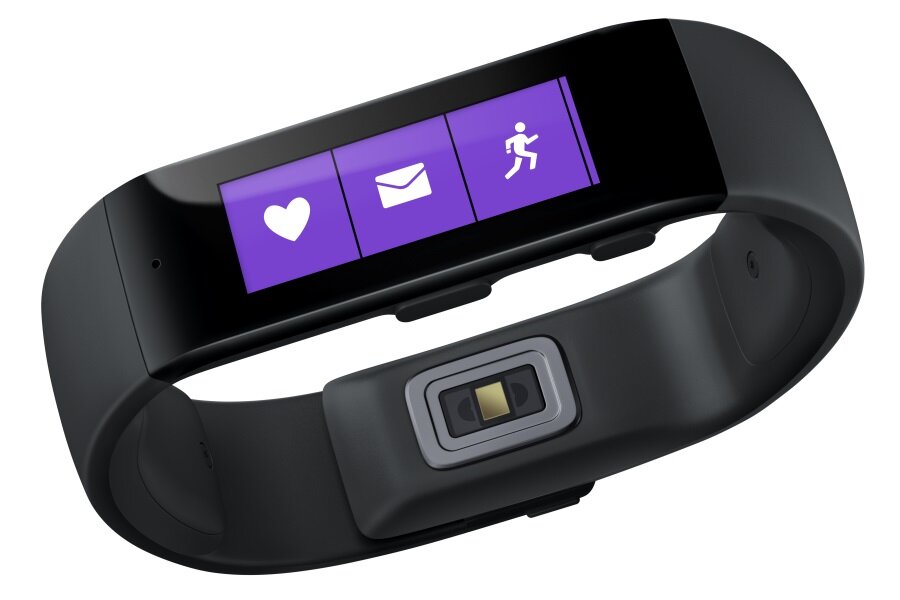Microsoft Band fitness tracker plays well with iPhone, Android
Loading...
Microsoft made its first entry into wearable computing on Thursday with the Microsoft Band, a $199 health and fitness tracker that, the company says, will let you “leave your phone in your pocket and miss nothing.”
Unlike the upcoming Apple Watch, the Microsoft Band isn’t meant to replace your current timepiece. Instead, the matte-black band is meant to monitor your health with an array of sensors. The Band has optical heart rate sensing, accelerometers and a gyroscope to measure movement, GPS (so it can track the route you ran, hiked, or biked, even if your phone isn’t nearby), a microphone, light sensors, and even a sensor to gauge skin temperature. Microsoft says the Band should have enough battery life for 48 hours of “normal use,” though that number drops somewhat if the GPS is turned on.
The Microsoft Band works in concert with Microsoft Health, a collection of apps and a cloud service that use that data that all those sensors gather to tell you how far you walked each day, how many calories you burned during exercise, and other useful bits of information.
The more data you feed into Health, the more detailed insights it will be able to provide: Microsoft says, for example, that it could judge how long your body needs to recover before your next workout. Or it could use the Band’s light sensor to recommend what sunscreen strength you should apply. Or could crunch movement and heart rate data to give you information about how well you slept.
The apps work on Windows Phone, iOS, and Android platforms, and, happily, the cloud service works with other apps like RunKeeper, and other devices like the Jawbone UP – in fact, it’s compatible with any Bluetooth device running a recent version of Windows Phone, iOS, or Android.
Though fitness is certainly the focus here, the Microsoft Band can also perform some office-assistant tasks: it can show texts and incoming call notifications on the 1.4-inch touch screen, and can vibrate when a new message arrives. Microsoft has also partnered with Starbucks to let customers pay by loading their Starbucks card barcode onto the Band and showing it at the counter. (Oddly enough, as Peter Bright as Ars Technica notes, there isn’t actually an official Starbucks app for Windows Phone, so a Band is the only way to use the platform to pay for your frappuccino.)
The Microsoft Band goes on sale in the US on Thursday. The Microsoft Health app is already live on the Windows Phone Store, iOS Store, and Google Play.






